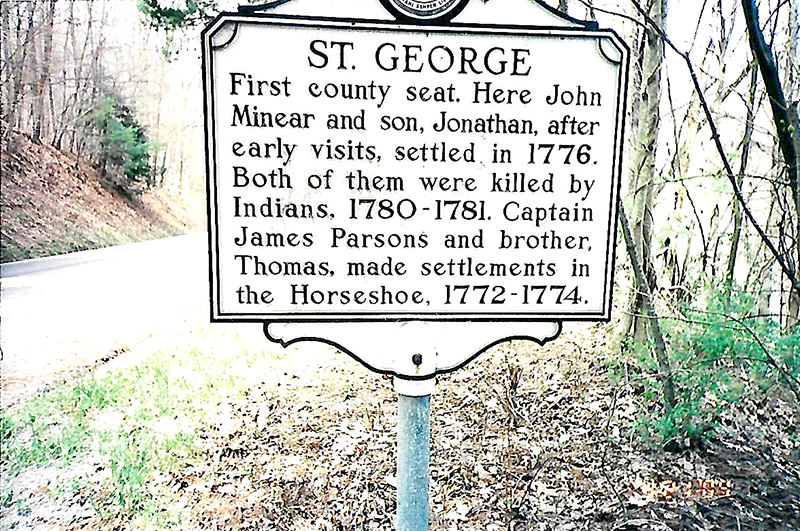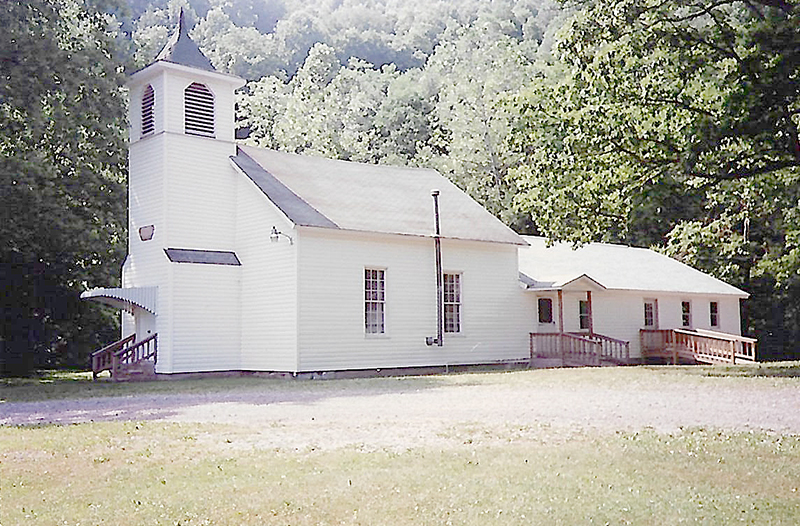 The first St. George Days Festival was held in 1971 with Summa Phillips as Queen. The eight churches in our local charge came together under the leadership of Pastor Arthur Fait. The purpose of the festival was to have fun and generate money to support our churches. The St. George united Methodist Church continues to have the festival to help our local community and to do mission work.
The first St. George Days Festival was held in 1971 with Summa Phillips as Queen. The eight churches in our local charge came together under the leadership of Pastor Arthur Fait. The purpose of the festival was to have fun and generate money to support our churches. The St. George united Methodist Church continues to have the festival to help our local community and to do mission work.
 The United Methodist Women are working together again to prepare for a day filled with food, yard sales, evening cake walk, fun and fellowship. They work to keep the knowledge of their heritage alive with information. They always have the history display set up with information that has been available to them. There are pictures and documents included to see.
The United Methodist Women are working together again to prepare for a day filled with food, yard sales, evening cake walk, fun and fellowship. They work to keep the knowledge of their heritage alive with information. They always have the history display set up with information that has been available to them. There are pictures and documents included to see.
The food at the church is great and includes hot dogs, side dishes, desserts and drinks. There is a silent auction, a giveaway yard sale plus other families join in with yard sale items.
The old St. George Academy will be open for visiting by Bud and Jane Parsons. The building is one of the oldest still standing in good shape for us to remember the past.
The cake walk will be at 6 p.m. on Saturday and Sunday services will start at 10 a.m. A covered dish meal will be at 1 p.m. and a Community sing starts at 2 p.m. All proceeds go to the United Methodist Women mission project.
St. George Looking East
Nowhere along the Cheat River from its origin in Parsons, WV, to its terminus in Point Marion, Pa, is there a spot more beautiful than the little village of St. George in Tucker County, with its quiet peace and verdant fields.
It was founded in 1774 by John Minear, a German immigrant and soldier under Frederick the Great. He named it Western Ford and it was so known until 1856 when its name was changed to Saint George and it became the county seat of the newly created county of Tucker.
John Minear built a fort on the land which the court house was built in 1860. The fort was nothing more than a large lo house with loop holes between the logs through which the occupants of the fort could shoot at marauding Indians. It was surrounded by a stockade about ten feet in height, made by setting posts side by side in a circle surrounding the log house for all the families in the area.
It was built large enough to make room for all. In the day the men went to the woods and fields to work and left the women and children in the fort. If an alarm was given that Indians were in the vicinity, the men would rush to the fort and prepare to defend it. Often, to make the Indians think the fort had a larger garrison, the men would first dress in one type of clothing, then in another type and at each change paraded about the yard in full view of the Indians who were looking on from the surrounding hills. This ruse is said to have prevented several attacks on the fort.
Jonathan Minear, a son of John Minear, was killed in a very brutal manner, by Indians April 16, 1780 on the banks of Lower Jonathan Run. He was with two men named Cameron and Washburn. Cameron escaped but Washburn was captured (later escaped) and Jonathan was slain. He was shot in the hip when the Indians first attacked and was unable to escape. The Indians pursued him around a huge beech tree, chopped off his fingers as he held to the tree, beat him to death with tomahawks, scalped him and drove pieces of his skull bones into a nearby tree stump.
Not quite a year later, on April 5, 1781, John Minear, the colony’s founder, was ambushed along with the same Cameron that was with Jonathan when he was slain, and some other men of the Western Ford colony, near Philippi in Barbour County, and he too was slain as was Cameron and another man named Cooper. Salathiel Goff escaped and walked to Western Ford and warned the fort.
John Minear carried the irons for the first saw mill to be erected west of the Allegheny Mountains over the Seneca Indians Trail, which was old when the white man came. The mill was set up on a stream now known as Mill Run, in about the year 1776. The new settlement was growing and lumber was needed. Minear, having come from Moorefield about two years before, brought the irons which weighed over two hundred pounds over the trail on horseback, a distance of about eighty miles. Some of these irons can be seen today cemented into the memorial marker the Minear descendents erected July 29, 1928, in St. George, to the memory of the Minear boys, Jonathan and David.
David, a son of John and brother of Jonathan, was a Revolutionary War soldier under General George Rogers Clark. He operated the saw mill and was head of the Minear clan until his death in 1834. He was the father of nine children.
In 1865, nine years after becoming the county seat of Tucker County, there were only five families in St. George. They were the William Ewin, Enoch Minear, Samuel Bowman, Adam Tate and William E. Talbott families. All the buildings then in St. George were constructed of logs except three, the court house was constructed of home kilned bricks, Enoch Minear’s stone residence and Adam Tate’s home, used as an inn, and constructed of lumber. Only one road served St. George, it ran from the present site of Parsons, then consisting of three families, to Terra Alta, then known as Cranberry Summit. The road to Parsons forded Cheat River five times in ten miles and at each crossing a boat ferry was maintained for foot travelers.
A big part of the town was destroyed by fire in 1888 and in 1893 the county seat was moved to Parsons. St. George was never incorporated.



